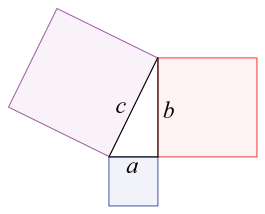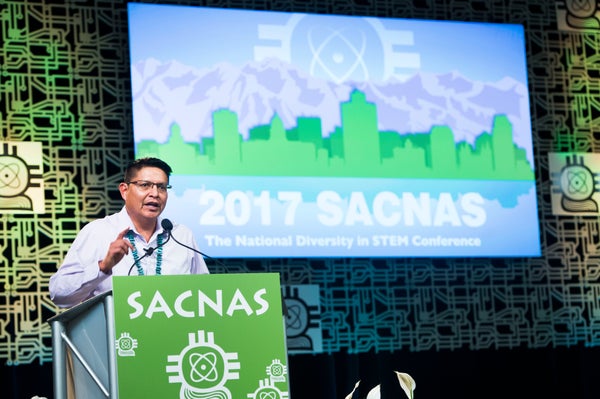This article was published in Scientific American’s former blog network and reflects the views of the author, not necessarily those of Scientific American
In this episode of My Favorite Theorem, my cohost Kevin Knudson and I were fortunate to talk to Henry Fowler. Dr. Fowler is the chair of the mathematics department at Diné College, a college that serves Navajo Nation. You can listen to the episode here or at kpknudson.com.
I met Dr. Fowler at the SACNAS (Society for the Advancement of Chicanos and Native Americans in Science) annual conference in October. Conveniently for me, it was located a short bike ride from my house in Salt Lake City. Dr. Fowler is gave a moving keynote address at the conference about his efforts to improve math education in his Navajo community. One of the major projects he has been involved in are math circles, math enrichment programs for junior high and high school students and their teachers. This might ring a bell for some podcast listeners and blog readers becase George Csicsery recently produced a documentary about the effort called Navajo Math Circles.
On supporting science journalism
If you're enjoying this article, consider supporting our award-winning journalism by subscribing. By purchasing a subscription you are helping to ensure the future of impactful stories about the discoveries and ideas shaping our world today.

The Pythagorean theorem states that in this right triangle with side lengths a, b, and c, those lengths satisfy the relationship a2+b2=c2. In the diagram, the blue and red squares put together have the same area as the purple square. Credit: Wapcaplet Wikimedia(CC BY-SA 3.0)
For his favorite theorem, Dr. Fowler chose the Pythagorean theorem, probably the most famous theorem in mathematics. This theorem asserts a relationship between the lengths of two legs of a right triangle, a and b, and the hypotenuse, c: a2+b2=c2. Although most people now know it by the name of the Greek mathematician Pythagoras, the relationship between these lengths was known by people in many places, including North America, long before Pythagoras was born. Dr. Fowler talked about the many places in which Navajo people traditionally used the Pythagorean theorem, including distance calculations, astronomy observations, and building construction.
In each episode of the podcast, we ask our guest to pair their theorem with something: food, beverage, art, music, or another nonmathematical delight in life. Dr. Fowler’s theorem pairing was a bit unusual. He talked about how the Pythagorean theorem intersects with his heritage as a Navajo, including some ways in which his upbringing helped him discover his talent for and interest in mathematics.
You can learn more about Navajo Math Circles by watching the documentary on PBS this month (November 2017; it may be available at that link beyond this month as well). You can also find information about the documentary on the Zala Films website.
You can find more information about the mathematicians and theorems featured in this podcast, along with other delightful mathematical treats, at kpknudson.com and here at Roots of Unity. A transcript is available here. You can subscribe and review the podcast on iTunes and other podcast delivery systems. We love to hear from our listeners, so please drop us a line at myfavoritetheorem@gmail.com. Kevin Knudson’s handle on Twitter is @niveknosdunk, and mine is @evelynjlamb. The show itself also has a Twitter feed: @myfavethm and a Facebook page. Join us next time to learn another fascinating piece of mathematics.
Previously on My Favorite Theorem:
Episode 0: Your hosts' favorite theorems Episode 1: Amie Wilkinson’s favorite theorem Episode 2: Dave Richeson's favorite theorem Episode 3: Emille Davie Lawrence's favorite theorem Episode 4: Jordan Ellenberg's favorite theorem Episode 5: Dusa McDuff's favorite theorem Episode 6: Eriko Hironaka's favorite theorem
